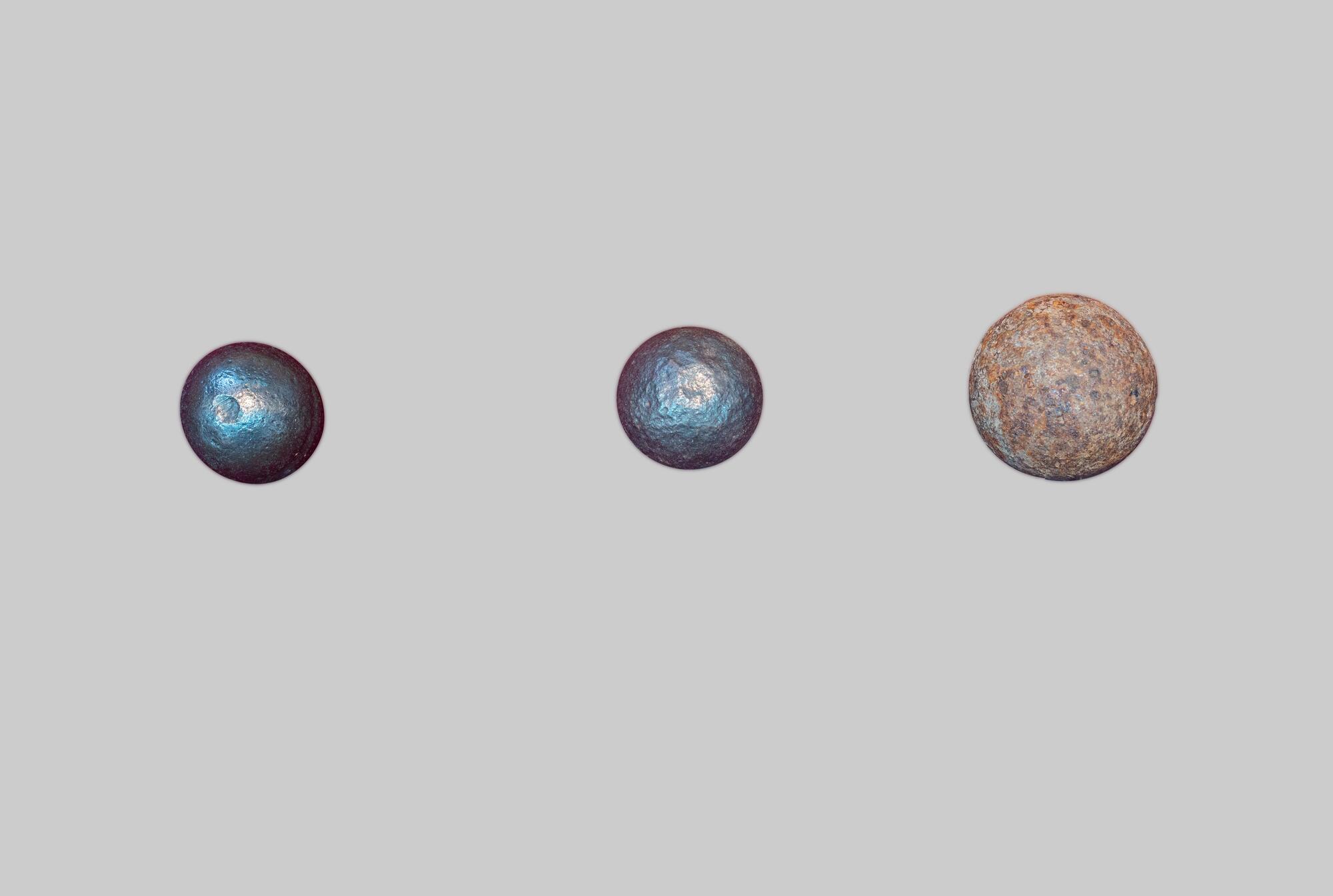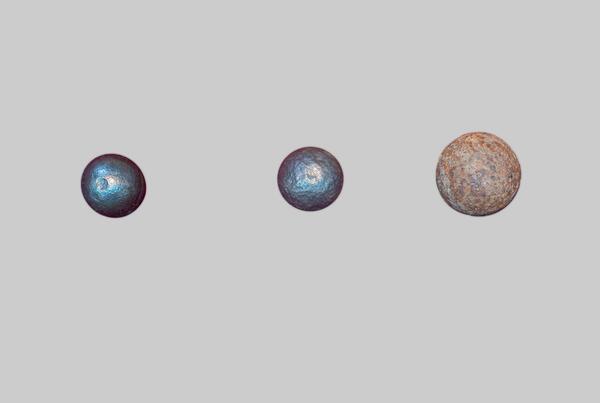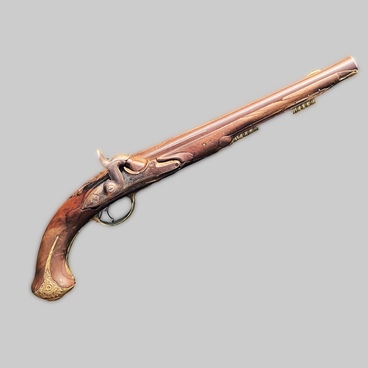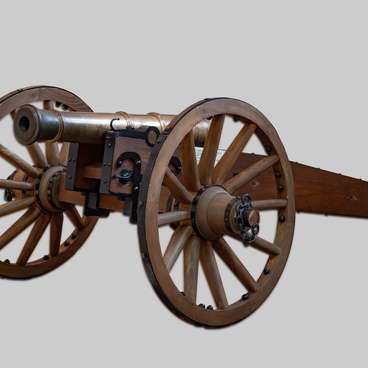Collection of weapons of Kuznetsk fortress museum contains case-shot bullets, a kind of artillery shells. It consists of a thon-wall cylinder container with spheral bullets. Case-shot does not have any shell burster or an ignition tube. When a shot is fired, the pressure of powder gases causes the explosion of the container, and the bullets shoot out from the muzzle in wide sheaf. A component of a case-shot is a cast ball of scrap iron with uneven surface, 4 cm in size. The case-shot bullets were found in Kuznetsk, in the site of the Swamp Citadel – a fortification dating end XVIII — early XIX century.
In 1621, Military Regulations on Military, Cannon and Other Matters related to War Science were issued, compiled by OnIsim Mikhailov. The regulations comprised 663 ‘orders’ with quite a detailed description of the status, organization and military use of artillery. The author also mentioned the powder and ‘faceted iron birdshot’ ratio in the shell — ‘a handful of birdshot for a pound of powder’. We can suppose that most likely, he described a prototype of a case-shot grenade or a shrapnel shell.
In those times the artillery guns were muzzle-loading, with a smoothbore barrel. They were loaded with cast iron cannonballs, cast iron spheric powder shells filled in with smoke rifle powder and case-shot. Ammunition weighing up to one ‘pood “(Russian unit of weight -16,38 kg) were called grenades in the Russian army, and those heavier than one pood were called bombs.
In 1784, a British officer Henry Shrapnel suggested an improvement for the grenades and bombs by putting spheric bullets mixed with powder inside the shells. Another important feature of the guns using such ammunition was the fact that the length of the ignition case primer could be easily changed right before the shot. It allowed calculating approximate trajectory and time of the shell explosion. It was assumed that such ammunitions will be mainly used against infantry and cavalry But the British Military Ministry only accepted the proposed ammunitions for service in November 1803.
Case-shot turned to be especially efficient upon changing the combat tactics in open battlefield from linear to perpendicular. The bullets laid in an explosive frame spread over a certain sector from the gun bore and inflicted maximal damage to the enemy.
In 1621, Military Regulations on Military, Cannon and Other Matters related to War Science were issued, compiled by OnIsim Mikhailov. The regulations comprised 663 ‘orders’ with quite a detailed description of the status, organization and military use of artillery. The author also mentioned the powder and ‘faceted iron birdshot’ ratio in the shell — ‘a handful of birdshot for a pound of powder’. We can suppose that most likely, he described a prototype of a case-shot grenade or a shrapnel shell.
In those times the artillery guns were muzzle-loading, with a smoothbore barrel. They were loaded with cast iron cannonballs, cast iron spheric powder shells filled in with smoke rifle powder and case-shot. Ammunition weighing up to one ‘pood “(Russian unit of weight -16,38 kg) were called grenades in the Russian army, and those heavier than one pood were called bombs.
In 1784, a British officer Henry Shrapnel suggested an improvement for the grenades and bombs by putting spheric bullets mixed with powder inside the shells. Another important feature of the guns using such ammunition was the fact that the length of the ignition case primer could be easily changed right before the shot. It allowed calculating approximate trajectory and time of the shell explosion. It was assumed that such ammunitions will be mainly used against infantry and cavalry But the British Military Ministry only accepted the proposed ammunitions for service in November 1803.
Case-shot turned to be especially efficient upon changing the combat tactics in open battlefield from linear to perpendicular. The bullets laid in an explosive frame spread over a certain sector from the gun bore and inflicted maximal damage to the enemy.



